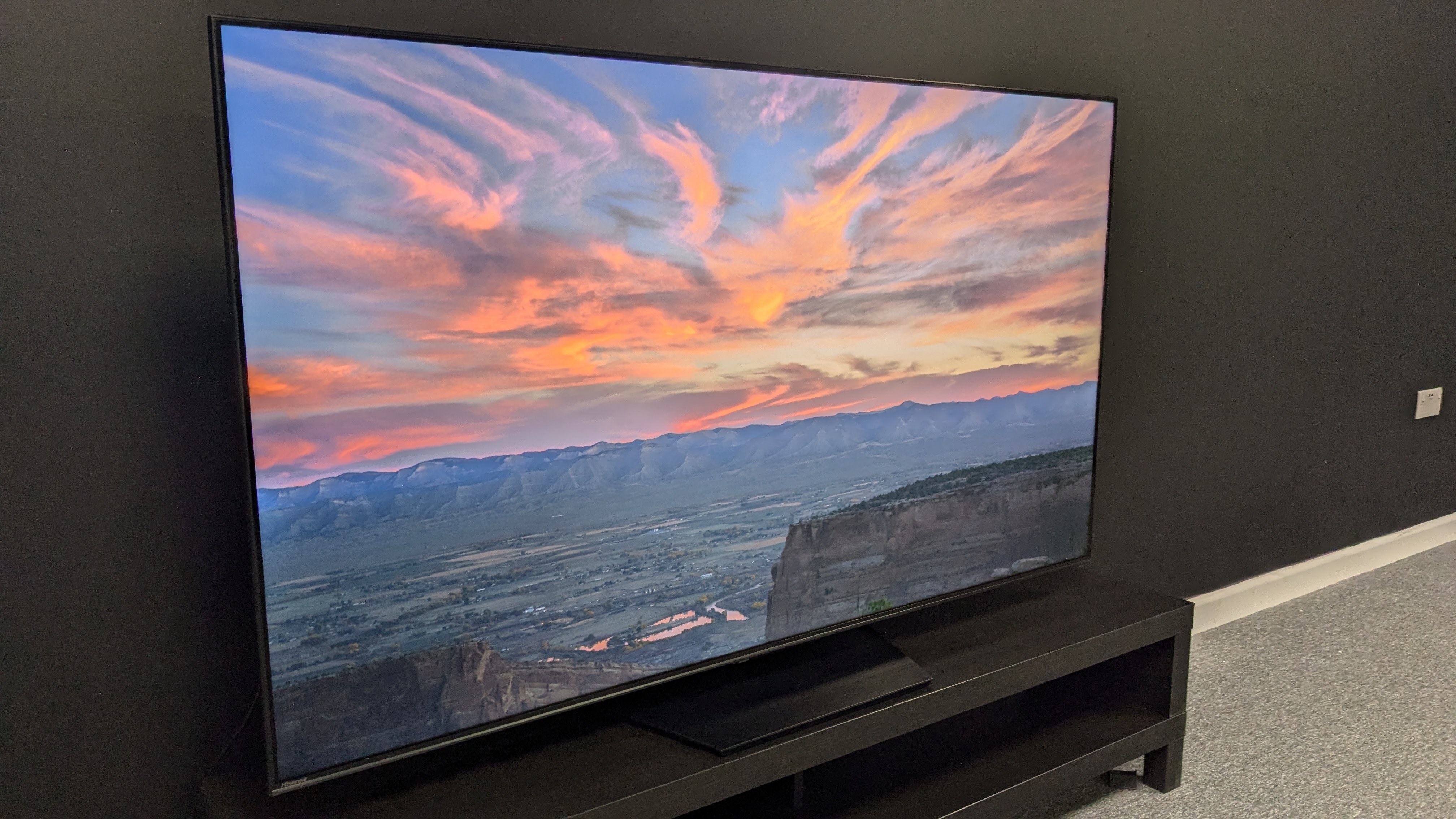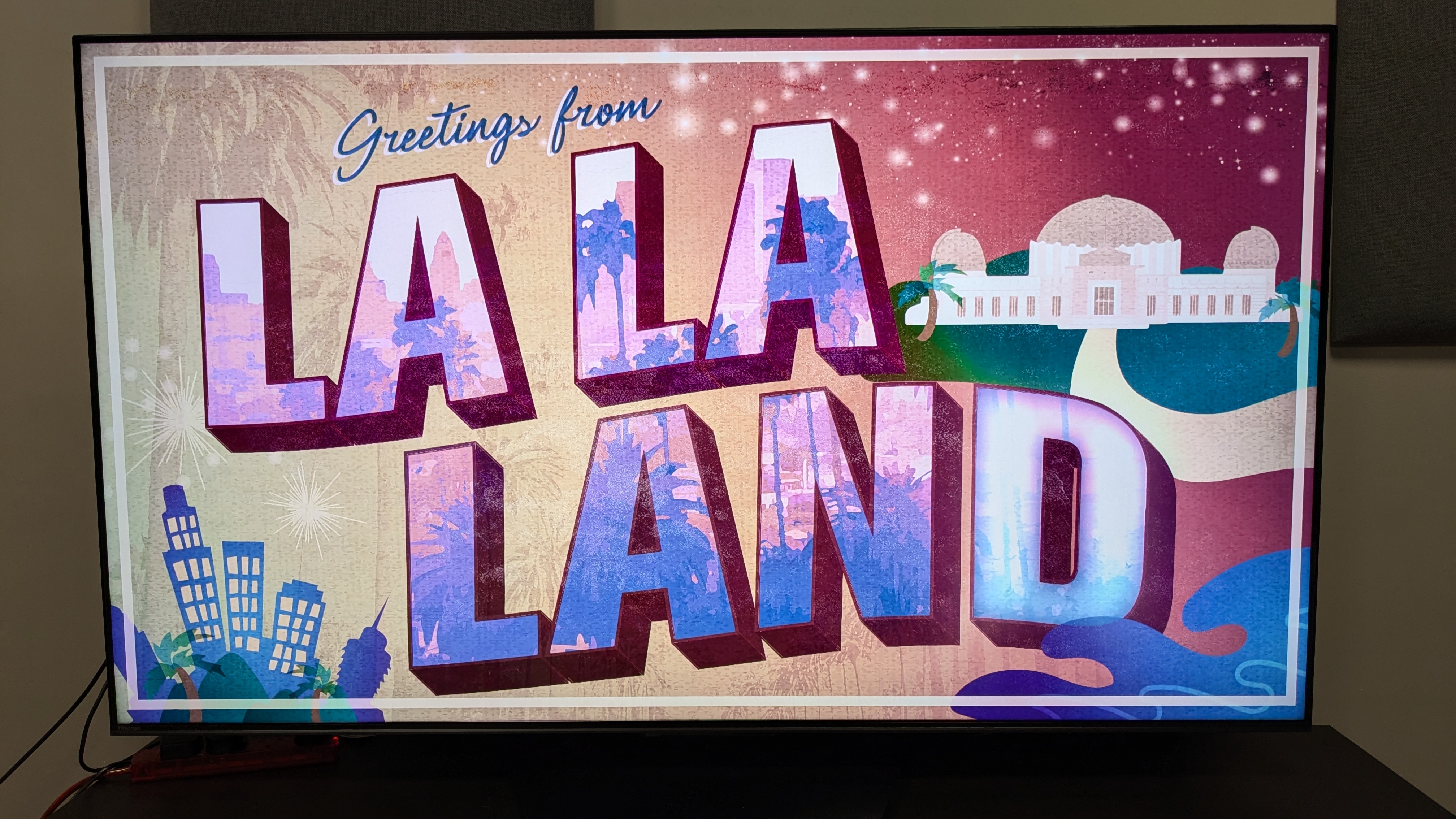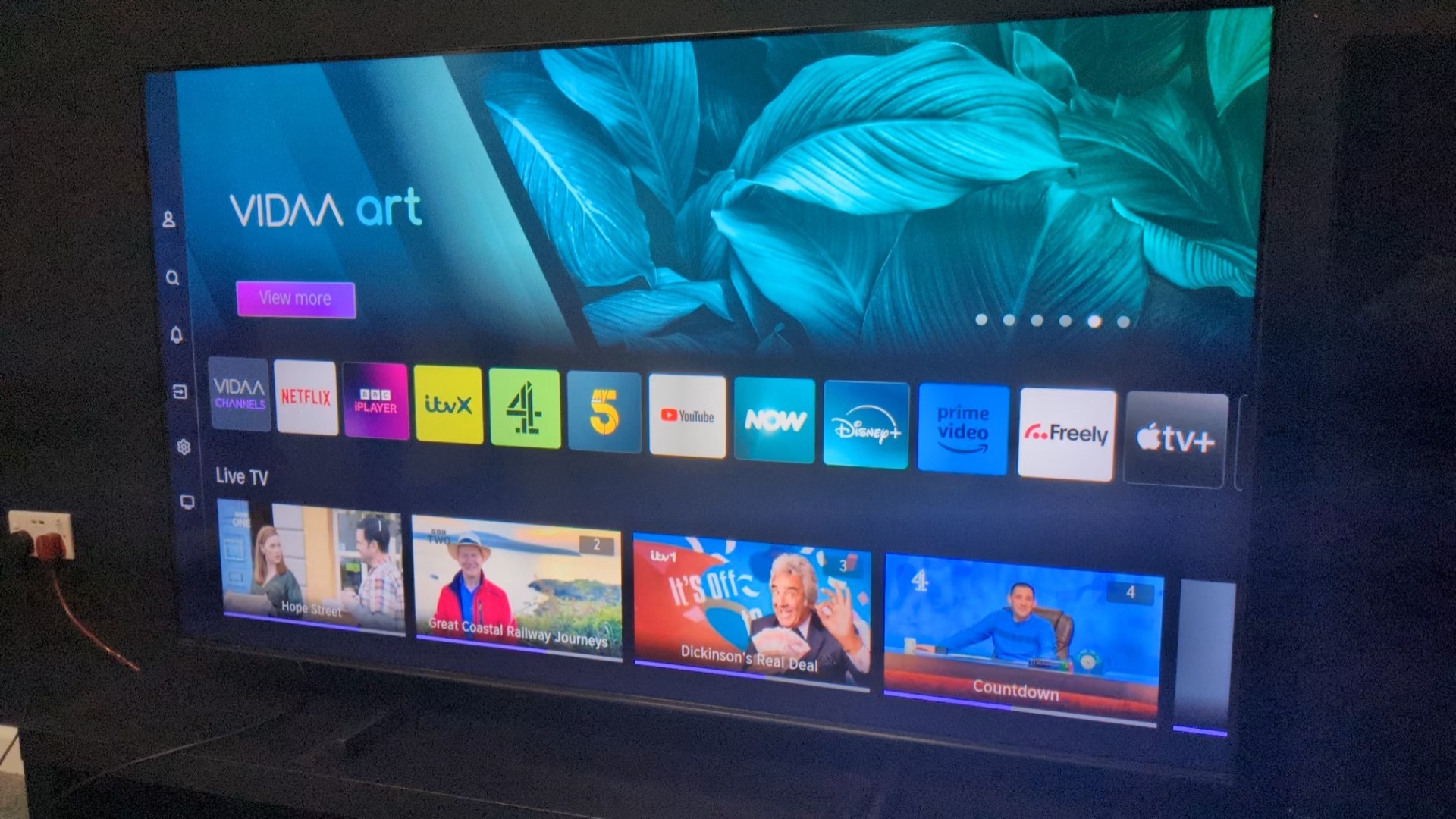
The Hisense U6N mini-LED TV delivers solid picture quality, Dolby Vision and HDR10+ HDR support and a decent list of gaming and smart features at a fraction of the price of its more premium mini-LED rivals.
For
- Detailed, colorful pictures
- Full HDR support
- Very affordable price
Against
- Limited sound quality
- No 4K 120Hz for gaming
- Narrow viewing angles
The Hisense U7N mini-LED TV outperforms its price at nearly every level, delivering contrast-rich pictures, a good stock of gaming and smart features and full HDR support including both Dolby Vision and HDR10+.
For
- Great overall picture quality
- Superb gaming features
- Incredible value
Against
- Picture requires adjustment
- Some backlight blooming
- Limited sound quality
Mini-LED TVs have become increasingly popular and more affordable over the years. Once a premium technology, budget brands such as Hisense and TCL have started to offer them for cheaper than ever before.
Hisense is at the top of the list when it comes to offering mini-LED TVs that demonstrate excellent value, and no range in Hisense’s lineup does it better than the ULED or ‘U’ series, which are some of the best TVs on the market.
I’ll compare the two most entry-level U series models I tested in 2024: the Hisense U6N and the Hisense U7N. The U7N is the step-up model of the two, but what does the extra cost get you?
Hisense U6N vs Hisense U7N: Specs
Hisense U6N vs Hisense U7N: Prices & availability

The Hisense U6N is the entry-level model in Hisense’s ULED range. It comes in 50- to 85-inch screen sizes, though it’s worth noting that the 50-inch model is only available in the UK, while the 85-inch model is not available in the UK. Prices for the Hisense U6N were as follows on release:
- 50-inch: N/A/ £899 / N/A
- 55-inch: $599 / £999 / AU$995
- 65-inch: $799 / £1,299 / AU$1,295
- 75-inch: $1,199 / £1,699 / AU$1,495
- 85-inch: $1,799 / N/A / AU$2,995
Since its release, prices for the U6N have fallen across all sizes, with the 65-inch model I tested falling as low as $599 in the US and £799 in the UK, giving incredible value for money.
The Hisense U7N is available in 55- to 85-inch screen sizes, with all sizes available in all regions. Prices for the U7N at launch were as follows:
- 55-inch: $799 / £1,299 / AU$1,599
- 65-inch: $999 / £1,599 / AU$2,299
- 75-inch: $1,499 / £1,899 / AU$2,999
- 85-inch: $2,030 / £2,799 / AU$3,999
Like the U6N, prices have fallen for the U7N, with the 65-inch model I tested falling as low as $649 / £899 / AU$1,395 in the months since its release. The U7N is arguably the better value for money as it has better local dimming performance and more gaming features.
Hisense U6N vs Hisense U7N: Features


The Hisense U6N is a well-featured TV for the money. It has a mini-LED backlight, a solid list of gaming features including VRR, Dolby Vision gaming, and ALLM, and supports both the Dolby Vision and HDR10+ high dynamic range formats. It also has an effective game mode and uses Google TV as its US smart TV platform and Hisense’s VIDAA interface in the UK.
So what does the extra cost of the Hisense U7N get you? For starters, more local dimming zones for better contrast (342 zones vs the U6N’s 240 in the 65-inch model I tested) and 4K 144Hz support for gaming.
Both sets also support the Dolby Atmos and DTS:X audio formats, though the U7N’s 2.1-channel, 40W built-in speakers give an overall punchier sound than the U6N’s 2.0-channel, 10W speakers.
The Hisense U7N wins this round not just because it has more features, but because you get those extra features for only a minimal price increase.
Winner: Hisense U7N
Hisense U6N vs Hisense U7N: Picture quality


When I tested the Hisense U6N, I found that its colors were bright and punchy and it demonstrated decent overall contrast. Blacks did take on a grayish tone, but dimmer movies such as The Batman still looked pretty good. But, it was the U6N’s detail and textures that impressed me the most. It didn’t have the same near-3D realism as Samsung TVs such as the Samsung QN90D, but the U6N’s picture was still refined and showed good depth.
So, what differences are there between the U6N and U7N? The U7N’s higher local dimming zone count improved contrast further, delivering deeper black levels and improved shadow detail, which made objects more visible in dark scenes. The U7N’s colors were also brighter and more vivid.
While neither TV’s brightness is going to blow away more premium mini-LEDs such as the TCL QM851G or step-up Hisense U8N, I measured the U6N and U7N’s peak brightness as 651 nits and 1,074 nits respectively. The higher brightness on the U7N was noticeable, giving HDR highlights a more dynamic look.
I also found that both the U6N and U7N struggled with motion. Neither TV is going to top the best TVs for sport, but the U7N in its Standard or Smooth motion preset did require less tweaking of settings compared to the U6N.
Both of these affordable mini-LED TVs demonstrated some backlight blooming, and contrast faded when viewed off-center. But, once again, the U7N didn’t suffer as badly here as the U6N.
The U7N takes the crown and shows that budget mini-LEDs can still demonstrate great picture quality. It’s easily the best affordable mini-LED TV with a picture that outperforms its price.
Winner: Hisense U7N
Hisense U6N vs Hisense U7N: Sound quality

Straight off the bat, I’d recommend pairing both the Hisense U6N and Hisense U7N with one of the best soundbars, as their limited speaker arrays and limited overall power aren’t going to give you the most cinematic experience.
Nevertheless, if you really don’t want to use a soundbar, I found during testing that the U6N demonstrated clear enough speech, though it struggled in other areas due to its limited soundstage and average sound placement.
The Hisense U7N didn’t fare much better in my tests, but its subwoofer helped make the bass sound punchier. I also found its directional sound placement to be more accurate.
Again, I’d recommend using a soundbar with both of these sets, but when it comes to built-in sound, the Hisense U7N just comes out on top.
Winner: Hisense U7N
Hisense U6N vs Hisense U7N: Design & smart TV


Both the Hisense U6N and Hisense U7N have a solid, but basic design. Each comes with an easy to assemble stand and has a trim enough bezel and profile, but their physical design is what you’d expect from a TV in this price range.
The built-in smart TV platform will vary depending on your location. In the US and Australia, the U6N and U7N use Google TV as their smart interface, whereas in the UK, both use Hisense’s own VIDAA platform. Google TV is my preferred interface of the two as it feels more responsive and has a tidier home screen, but both offer a good number of picture and sound settings to tailor the experience to your needs.
Design and smart TV: Tie
Hisense U6N vs Hisense U7N: Gaming


The Hisense U6N has a decent stock of gaming features at this budget price range, including VRR (AMD FreeSync Premium included), ALLM and Dolby Vision gaming, which beats the likes of the similarly priced Samsung Q60D.
However, the Hisense U7N offers all of this plus 4K144Hz support – a feature we look for in the best gaming TVs that will let you get the most out of PS5 and Xbox Series X consoles, as well as PC gaming. I found during testing that performance when playing Battlefield V was good on both the U6N at 60Hz and U7N at 120Hz, and both are sure to make gamers happy., Both TVs did a great job graphically as well.
The U7N’s gaming features make it more future-proof than the U6N and its picture and performance are better overall. If you’re a gamer, the U7N is the better choice.
Winner: Hisense U7N
Hisense U6N vs Hisense U7N: Value
The Hisense U6N and Hisense U7N are both excellent value for money. Both deliver a high-quality picture for less than you’ll find elsewhere, and they also come with a good list of gaming features.
The 65-inch model of the U6N costs around $499 / £699 / AU$1,295 and prices for the 65-inch U7N are around $699 / £899 / AU$1,395 at the time of writing. To give some context, compared to the Amazon Omni QLED ($599 / £899), another budget TV, both Hisense models have similar or better features and better picture quality.
Of the two, the Hisense U7N demonstrates the better value, thanks to its superior overall picture quality and features.
Winner: Hisense U7N
Hisense U6N vs Hisense U7N: Verdict

While both the Hisense U6N and Hisense U7N are good TVs, the U7N comes out on top in nearly every category. It has a stronger picture with better contrast, detail, and color. It also supports high frame rates for gaming and has a good range of smart features.
If you can’t stretch your budget, the Hisense U6N is still very good and delivers plenty of bang for your buck, but the U7N is the better TV and the better value of the two. One thing is for sure – both will feature among Black Friday TV deals.
Overall winner: Hisense U7N
You might also like
- The best OLED TVs
- Sony Bravia 9 review - a premium, flagship mini-LED
- OLED vs Mini-LED







